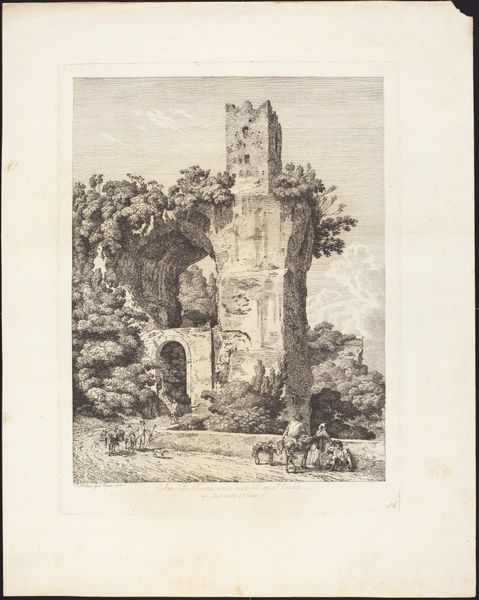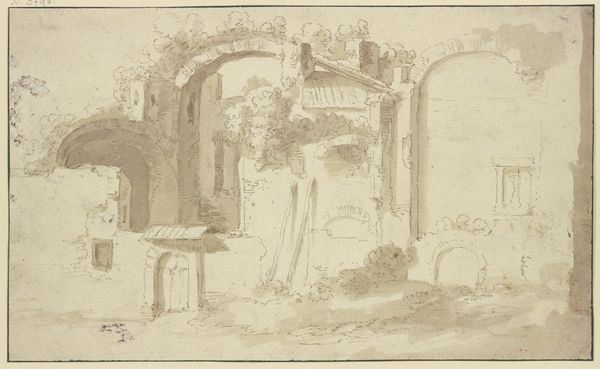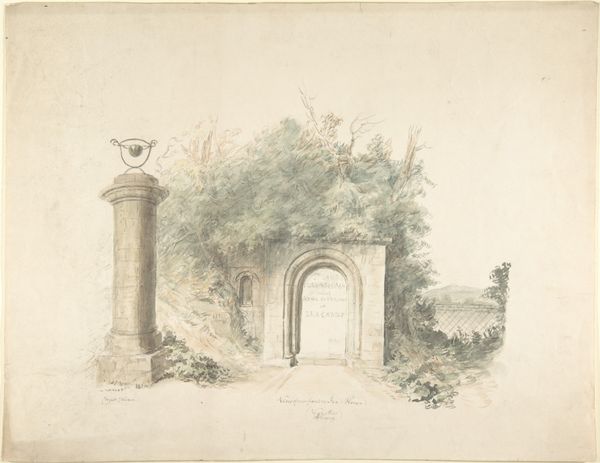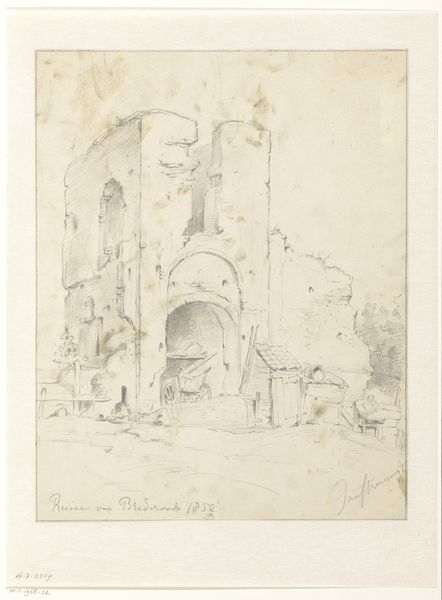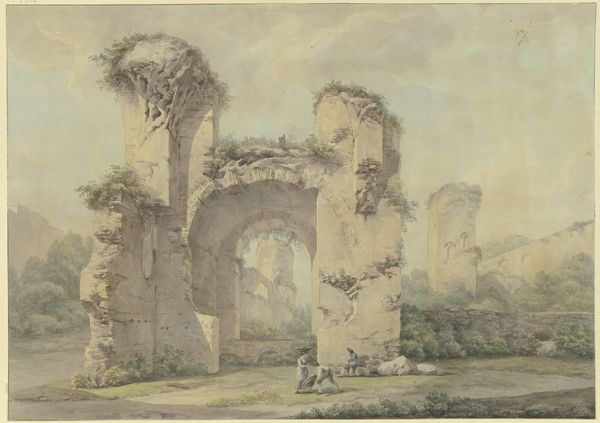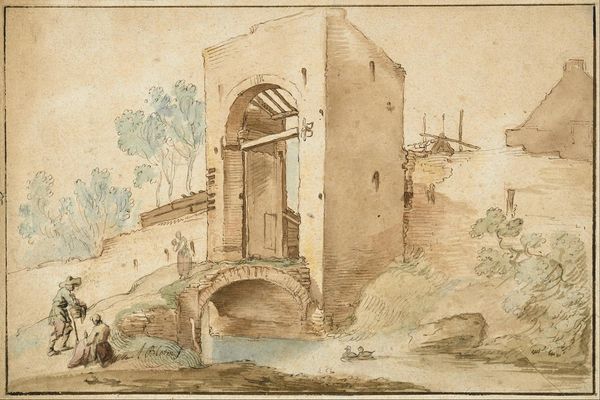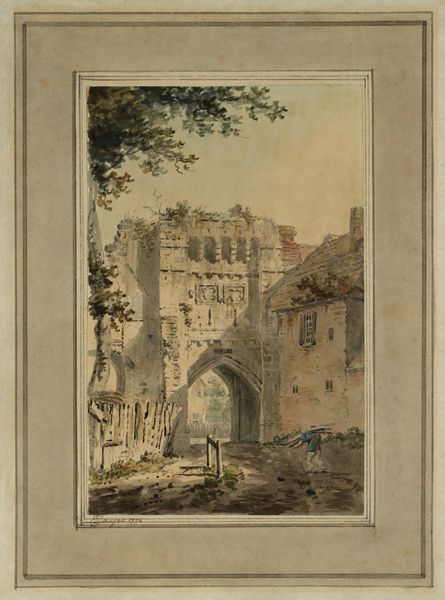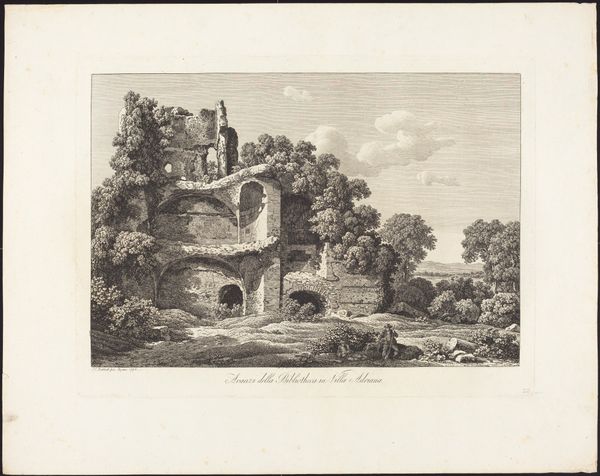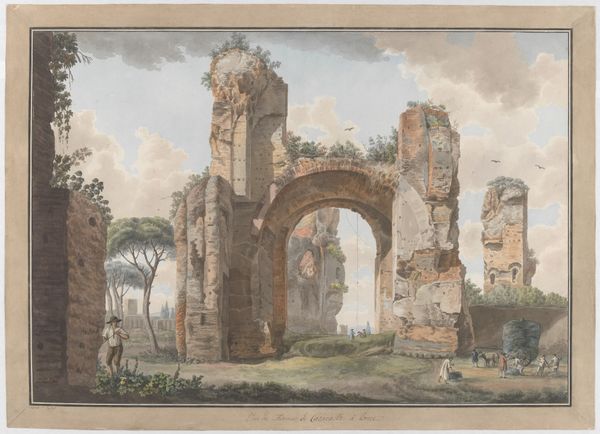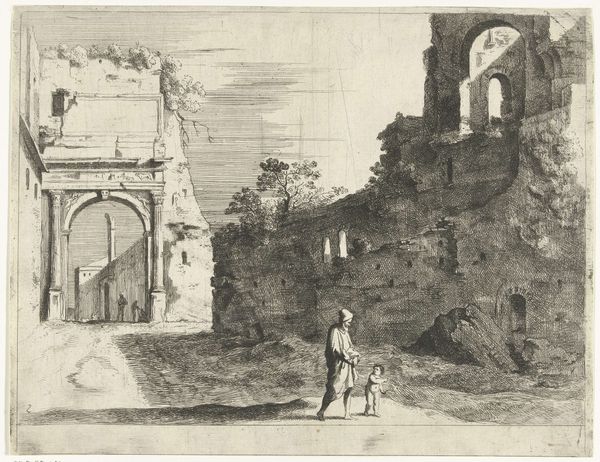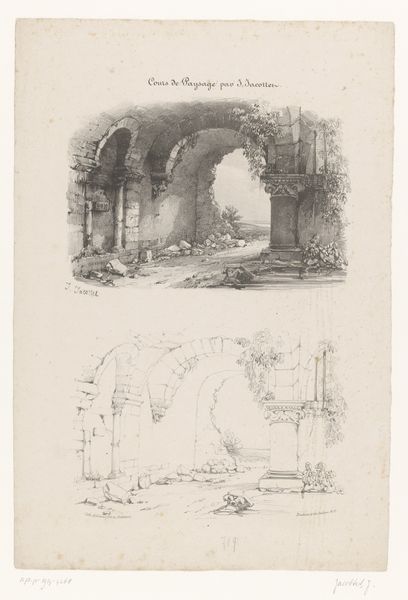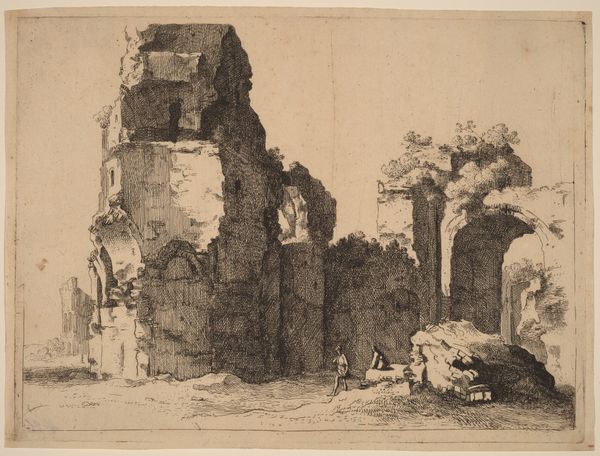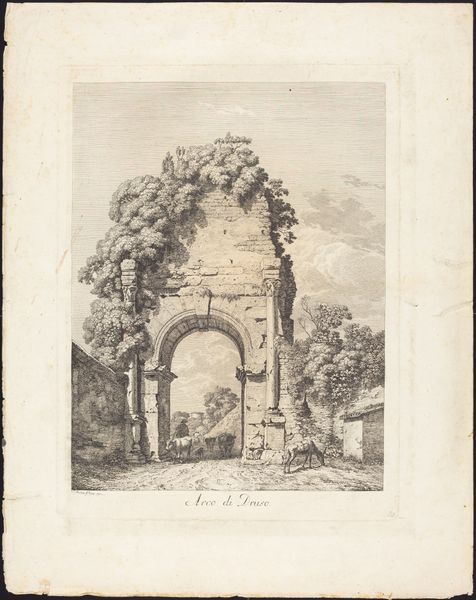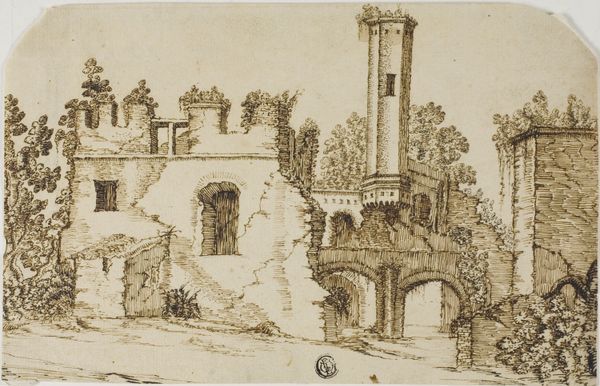
Monk Seated Before a Ruined Gateway 1785 - 1849
0:00
0:00
drawing, print, watercolor
#
drawing
# print
#
landscape
#
watercolor
#
romanticism
#
cityscape
Dimensions: 6 5/16 x 4 7/16 in. (16 x 11.2 cm)
Copyright: Public Domain
Editor: This watercolor drawing, "Monk Seated Before a Ruined Gateway" by François Marius Granet, was created sometime between 1785 and 1849. It has a very melancholic feeling to it. What stands out to you most about this work? Curator: The ruined gateway acts as a powerful symbol, doesn’t it? Think about it not just as architecture but as a cultural memory. Gateways often represent transitions, passages from one state to another. What does a *ruined* gateway then signify? Editor: Loss? The passage to something lost, perhaps? Curator: Precisely! And notice the solitary monk. Monks, often associated with contemplation and detachment, are, symbolically, on the margins. Their presence in this scene speaks volumes about human fragility against the backdrop of time and history. The ruin mirrors that fragility. Editor: It is quite humbling to consider how imposing that gateway once was. What did such imagery mean to viewers at the time it was made? Curator: The Romantic era, which Granet was part of, was fascinated by ruins. They offered a direct link to the past and became potent symbols of the transience of human achievement. Consider what emotional resonance a painting like this could have held for viewers processing societal shifts, perhaps a loss of tradition, or the unsettling pace of modernity. Does it not conjure those feelings even today? Editor: Absolutely! Seeing that vulnerability gives the image a timeless quality. I had not considered the monk in relation to that sense of loss and fragility before. Thank you! Curator: It is in that connection, that dialogue between the past and present, that the image finds its enduring power.
Comments
No comments
Be the first to comment and join the conversation on the ultimate creative platform.
